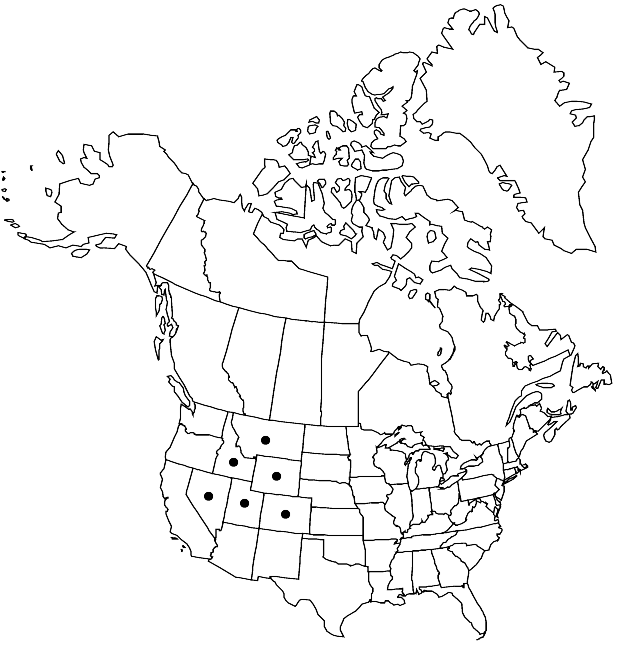Rorippa alpina
Mem. New York Bot. Gard. 1: 176. 1900.
Perennials; (terrestrial or of wet habitat, not submerged, caudex branched or simple, well-developed); usually glabrous. Stems usually decumbent to prostrate, rarely erect, much-branched basally and distally, (0.3–) 0.4–1.9 (–2.6) dm (rarely pilose basally). Basal leaves not rosulate; [petiole (0.3–) 0.9–2 (–2.5) cm]; blade [(0.6–) 1–3.2 (–4) cm × (2–) 3–8 (–15) mm], margins usually dentate to pinnatifid, rarely repand. Cauline leaves petiolate or subsessile; blade obovate to oblanceolate, smaller distally, base cuneate, attenuate, not auriculate, margins entire, crenate, or repand. Racemes elongated. Fruiting pedicels ascending to horizontal or slightly reflexed, straight or curved, (2–) 3–6 (–8) mm. Flowers: sepals ascending, oblong, 1–1.7 (–2) × 0.6–0.8 mm; petals yellow, spatulate, (1.3–) 1.5–2 × 0.5–0.8 mm; median filaments 0.8–1.2 mm; anthers ovate, 0.3–0.4 mm. Fruits often siliques, sometimes silicles, straight or slightly curved, oblong to lanceolate or ovoid, 3–7 (–8) × 1.4–2.1 (–2.7) mm; valves glabrous; ovules 26–42 per ovary; style (0.3–) 0.5–1 (–1.2) mm. Seeds biseriate, yellowbrown, ovoid to subglobose, 0.5–0.7 mm (0.4–0.5 mm diam.), reticulate. 2n = 16.
Phenology: Flowering Jun–Sep.
Habitat: Lakeshores, pond margins, streamsides, dried snow ponds, meadows, seep areas
Elevation: 1400-3800 m
Distribution

Colo., Idaho, Mont., Nev., Utah, Wyo.
Discussion
Selected References
None.
Lower Taxa
"elongated" is not a number."thick" is not a number."dm" is not declared as a valid unit of measurement for this property."dm" is not declared as a valid unit of measurement for this property.